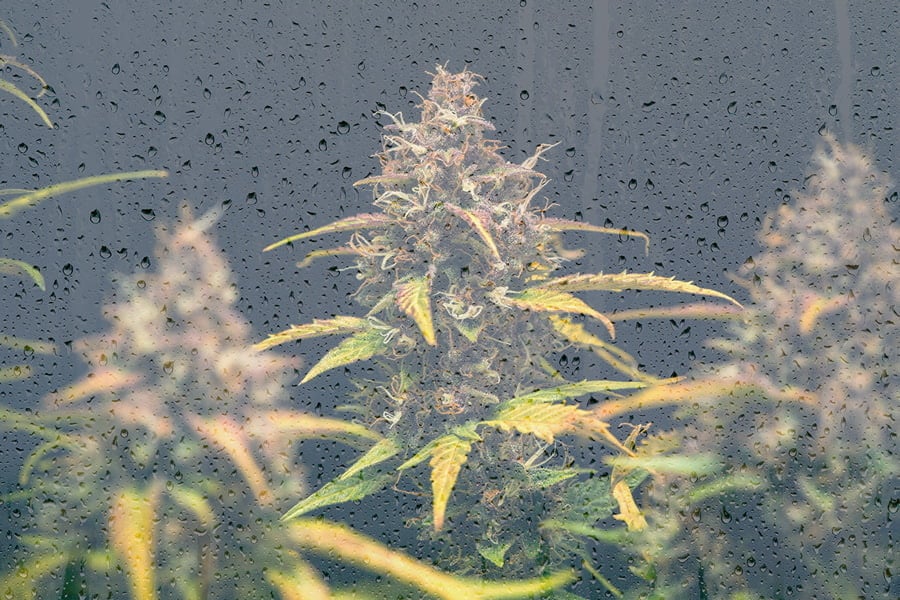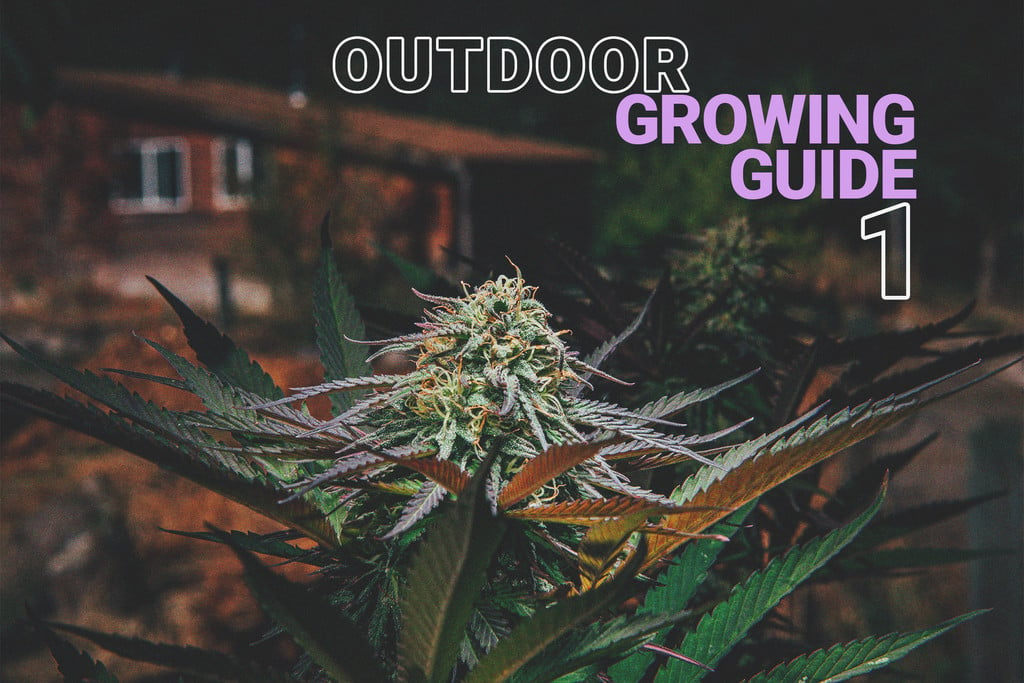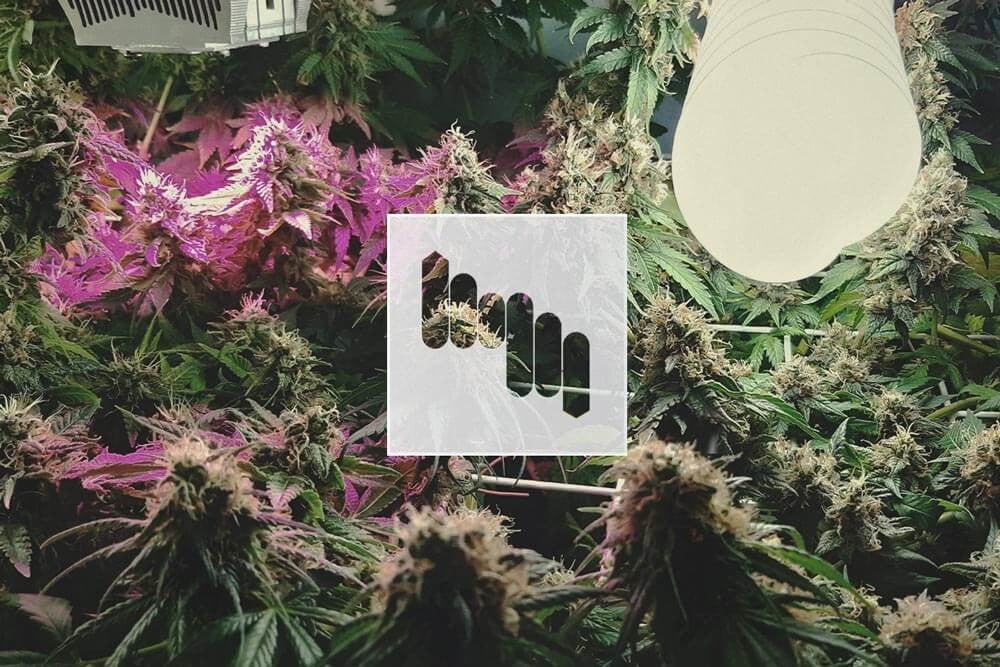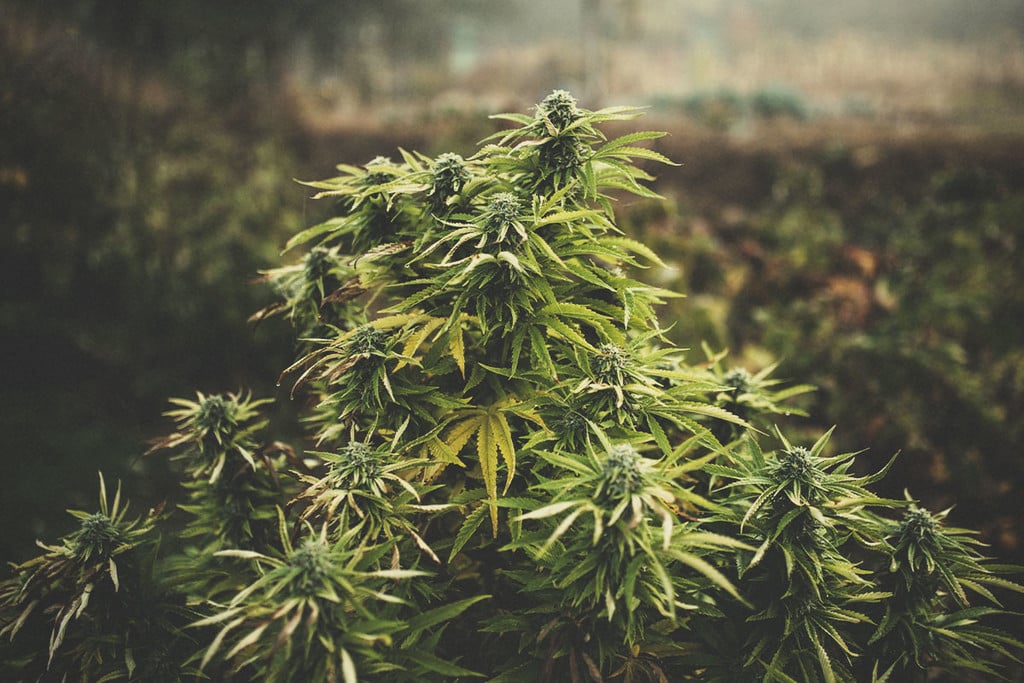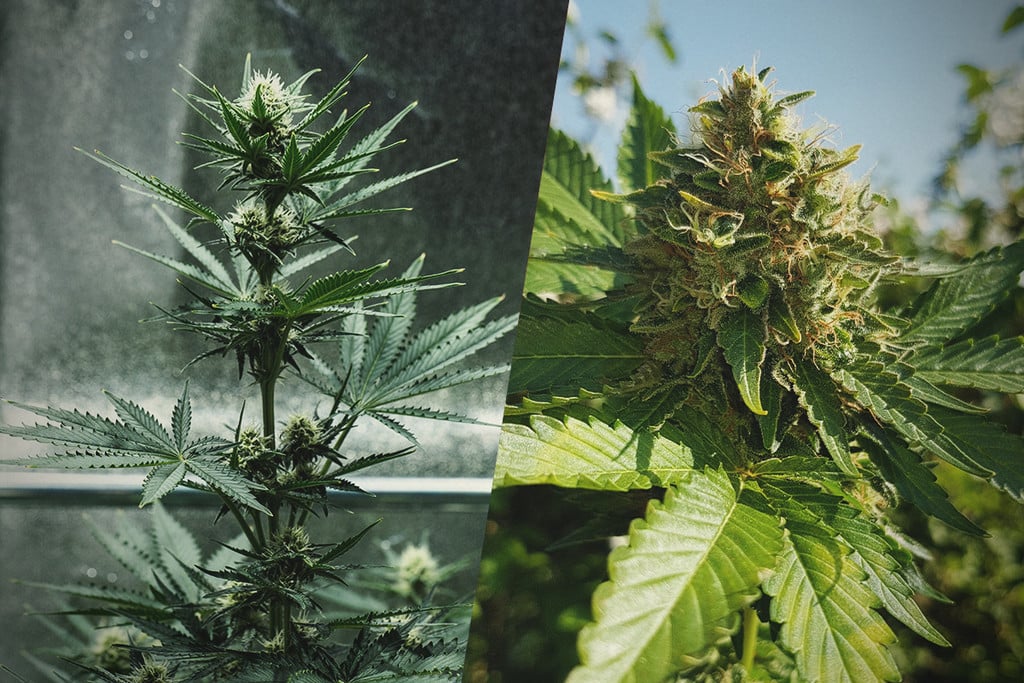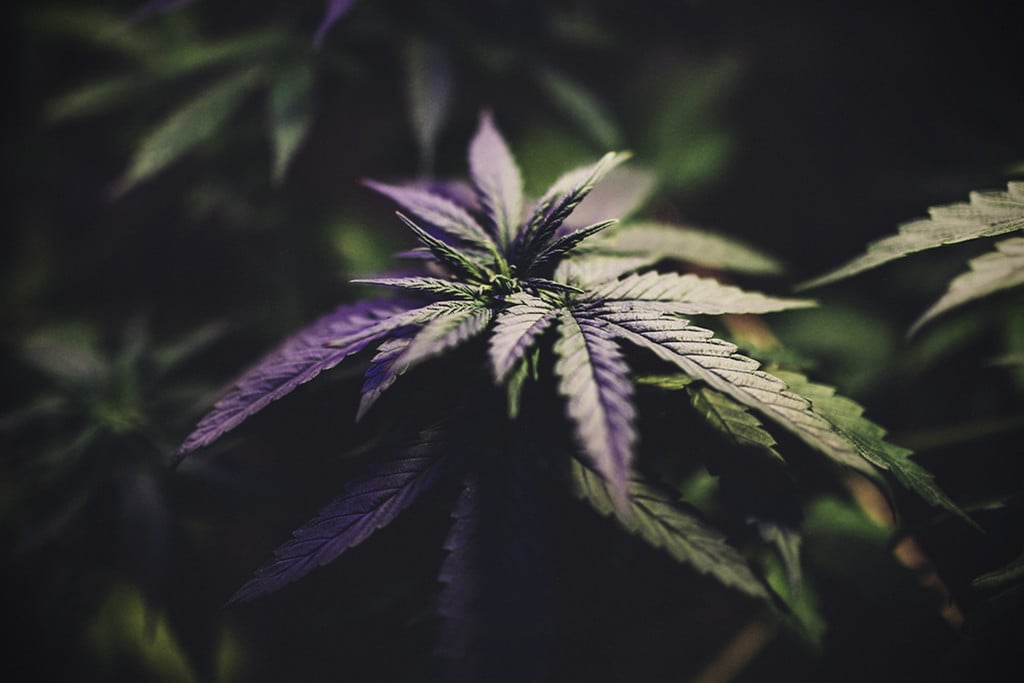 Cannabis Grow Guide by Royal Queen Seeds
Cannabis Grow Guide by Royal Queen Seeds
- Growing cannabis step by step
- Cannabis growing basics
- Choosing your seeds
- How to germinate seeds
- The cannabis vegetative stage
- The cannabis flowering stage
- Harvesting cannabis
- Trimming, drying, and curing
- Choosing pots and soil
-
Growing indoors
- A Complete Overview Of Growing Cannabis Indoors
- Cannabis Cultivation Tips: How To Set Up Indoor Grow Lights
- How Many Cannabis Plants Can You Grow Per Square Metre?
- Indoor Cannabis Growing: Relative Humidity and Temperatures
- Hydroponics Cannabis Growing Guide (with diagrams)
- Cannabis Micro Growing: Growing Great Weed in Tiny Spaces
- Growing outdoors
- How to grow autoflowering cannabis
- Cannabis nutrients and pH
- Cannabis troubleshooting: Nutrients
-
Cannabis troubleshooting: Growing
- Cannabis Seed Germination — Troubleshooting Guide
- How to Deal With Pythium (Root Rot) in Cannabis Plants
- Slow Cannabis Plant Growth And What You Can Do About It
- How to Deal With Leggy Cannabis Seedlings
- Watering Your Cannabis: How to Fix Overwatering and Underwatering
- Understanding Male, Female, And Hermaphrodite Cannabis
- Identifying and Treating Common Cannabis Ailments
- How To Revive a Sick Cannabis Plant
- How to Avoid Mouldy Weed During Drying and Curing
- How to Prevent and Treat Dry and Crispy Cannabis Leaves
- What Cannabis Leaves Can Tell You
- Causes and Solutions for Yellow Cannabis Leaves
-
Cannabis Strains Grow Report
- HulkBerry Automatic Grow Report
- Blue Cheese Auto Grow Report
- Purple Punch Automatic Strain Grow Report
- Triple G Automatic Grow Report
- Do-Si-Dos Automatic Grow Report
- Green Gelato Automatic Grow Report
- Haze Berry Automatic Grow Report
- Purple Queen Automatic Grow Report
- Cookies Gelato Automatic Grow Report
- Sherbet Queen Automatic Grow Report
- Sweet Skunk Automatic Grow Report
- Medusa F1 Grow Report
- Cannabis plant training
-
Weed growing tips
- The Cannabis Plant Anatomy
- How to preserve seeds
- How Much Sunlight Do Outdoor Cannabis Plants Need To Grow?
- How to Control and Prevent Stretching in Cannabis Plants
- My Cannabis Plants Are Growing Too Tall: What Should I Do?
- Should You Worry About Purple Or Red Cannabis Stems?
- What To Do When Your Indoor Cannabis Won’t Flower
- How To Protect Your Cannabis Plants From Heat Stress
- How To Tell If Your Female Cannabis Plant Has Been Pollinated
- Growing Medical Marijuana
- Bud Washing: How to Clean Your Weed
- Understanding Cannabis Yield per Plant
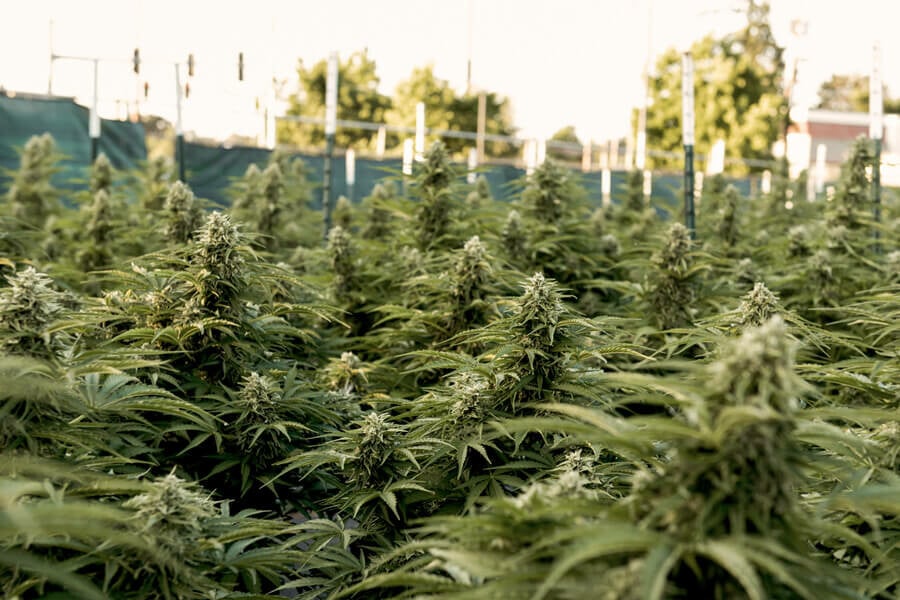
How Much Sunlight Do Outdoor Cannabis Plants Need To Grow?
Find out how much sun your cannabis plant needs, and how to best take advantage of it.
The more sunlight, the better; that’s the golden rule for growing weed outdoors. Unfortunately, we don’t all have access to a terrace, balcony, patio, or garden that receives full sun all throughout the day. In this article, we’ll take a closer look at weed’s passionate relationship with the sun, and show you just how much sunlight your outdoor plants need to produce a great harvest.
Contents:
- Why does cannabis need sunlight?
- What’s the difference between sunlight and artificial light from grow lamps?
- How much sunlight do outdoor cannabis plants need?
- When do cannabis plants flower outdoors?
- When to grow and harvest cannabis in the northern and southern hemispheres
- How to grow weed outdoors along the equator and in the tropics
- Understanding tropical cannabis strains
Why Does Cannabis Need Sunlight?
Through the power of photosynthesis, cannabis plants transform light energy from the sun into chemical energy to fuel their growth. Your weed plants use the energy they soak up from the sun to convert the water, carbon dioxide, and minerals they get from their environment into oxygen and energy-rich sugars to develop healthy roots, branches, and foliage.
Ready to start your outdoor grow? Our Growing Guide offers essential tips to help you make the most of your outdoor cannabis cultivation journey.
Free RQS
Grow Guide!
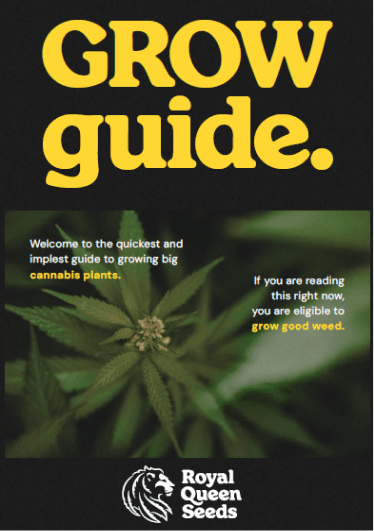
What’s the Difference Between Sunlight and Artificial Light From Grow Lamps?
Whether sunlight “beats” artificial grow lights is an age-old debate in the cannabis community, with proud, loyal legions on either side. At RQS, we’re firm believers that there’s no replacement for Mother Nature, but we understand that growing indoors under artificial lights also has a lot of benefits.
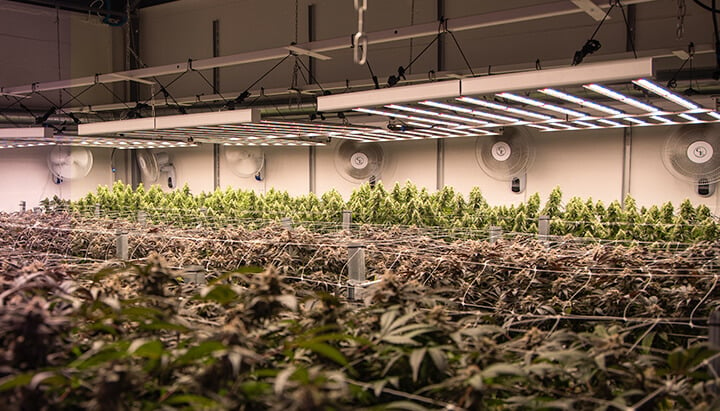
We personally love growing under the sun because it’s free and there’s simply no industrial lamp capable of replicating the sun’s power. However, providing cannabis plants with 10–12 hours of unobstructed sunlight can be challenging for the average home grower, especially when you’re trying to keep your plants out of sight from prying eyes.
That’s where indoor growing really shines; not only does it allow you to run really private grows, but growing under lights also has the added benefit of giving you a lot more control over your plant’s environment and light cycle.
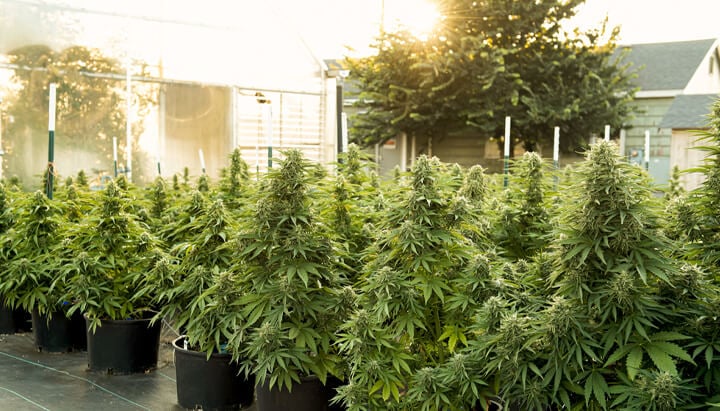
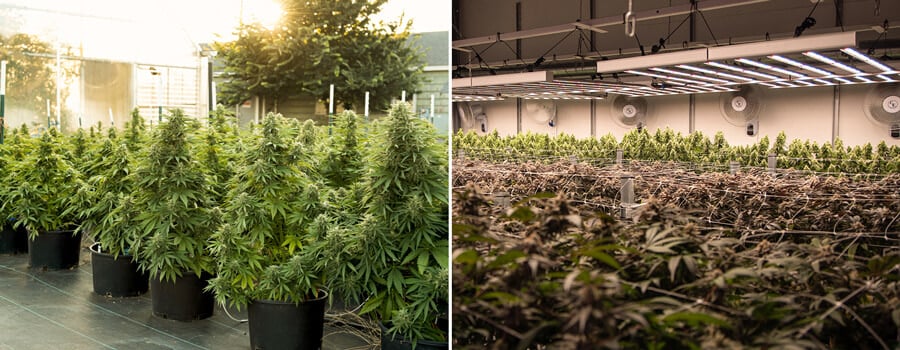
How Much Sunlight Do Outdoor Cannabis Plants Need?
Cannabis plants are happiest when they get between 10–12 hours of direct sunlight per day. As you’ll likely have witnessed with your own eyes, weed plants grow really vigorously, and hence need a ton of solar energy to fuel their growth.
However, it is possible to grow healthy cannabis plants outdoors with a minimum of 6 hours of uninterrupted sunlight. Just keep in mind that these plants will grow slower and therefore may produce lighter and lower-quality yields than plants getting optimal amounts of sun.
Can You Grow Cannabis With Indirect Sunlight Outdoors?
Read through a few grow forums and you’ll find plenty of growers who swear they’ve made it to harvest with just 1 or 2 hours of direct sunlight per day. Cannabis is, after all, a hardy plant that can withstand some pretty rough conditions when growing in the wild.
However, when growing weed at home, you’ll want to provide optimal conditions to maximise the size and quality of your yields.
If they’re growing in the shade, your plants will reach for the sun and develop long, lanky branches, few bud sites, and light, airy buds with less resin.
When Do Cannabis Plants Flower Outdoors?
Outdoors, photoperiod cannabis plants will flower after the summer solstice, when the days grow shorter and the nights grow longer. In the Northern Hemisphere, this happens gradually after the June solstice, which usually occurs on June 20th or 21st, depending on the year. In the Southern Hemisphere, cannabis plants will gradually start flowering after the December solstice, which takes place on December 20th or 21st.
Keep in mind that outdoor plants will start flowering gradually, as the daytime hours will diminish much more gradually than indoors, where you will flip your plants from veg to bloom with the flick of a switch.
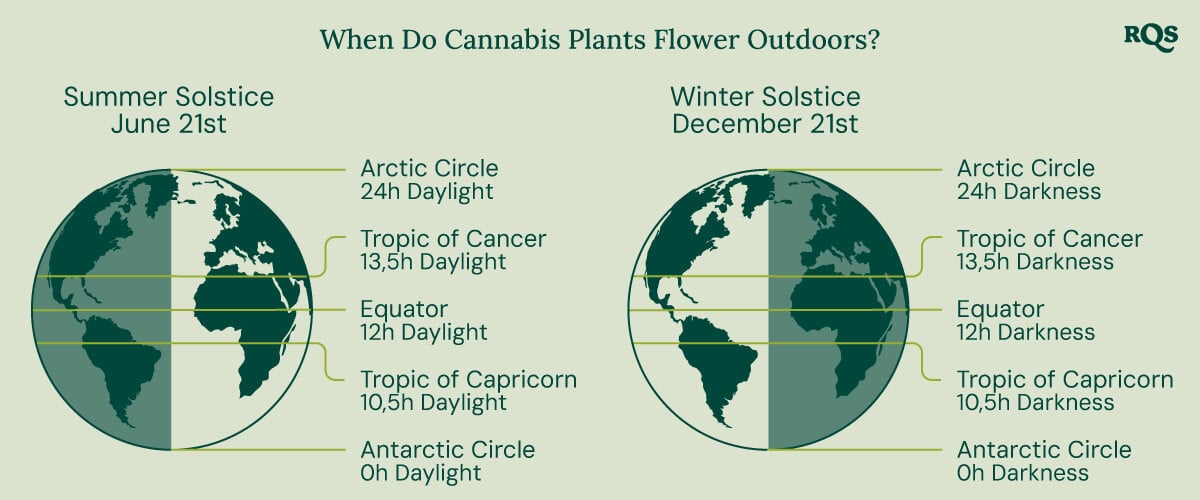
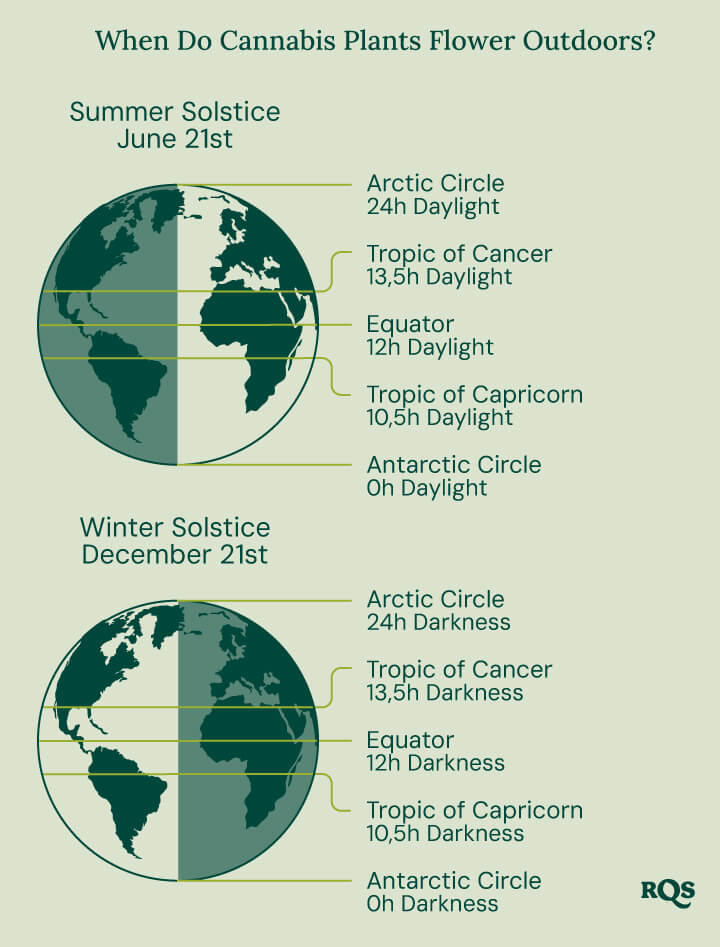
Is There a Difference Between Sunlight in the Equator vs in the Hemispheres?
Yes, there is a very big difference between sunlight in the hemispheres and the equator (or intertropical zones between the Tropics of Cancer and Capricorn).
Given the Earth’s orbit, its poles tilt toward the sun during different times of the year; the Northern Hemisphere is closest to the sun on the June solstice, while the Southern Hemisphere is closest to the sun during the December solstice. The closer a pole is to the sun, the more direct sunlight it receives, and the longer the days in the corresponding hemisphere.
The equator, however, continually remains at the same distance from the sun. Hence, it gets a constant 12 hours of sunlight all year round.
When to Grow and Harvest Cannabis in the Northern and Southern Hemispheres
Outdoor growers in the Northern Hemisphere will typically germinate their seeds in between spring and early summer, depending on their location. Along the Iberian Peninsula, for example, growers might start in early March and manage to grow two full crops of autos by August. Further north, however, growers will have to start a little later to avoid facing frosts, rain, hail, or other unfavourable conditions.
Growers in the Southern Hemisphere, on the other hand, might kick off their grows as early as September, and will typically harvest between March or May, although some sativas might be ready by early June (depending on the genetics and the local climate).
When growing outdoors, it’s important to know what genetics you’re working with and how they’ll respond to being planted during different times of the season. If you’re growing big sativas, for example, you may want to start your grow a little later to avoid the plants getting too large. If you’re working with fast autos, on the other hand, try to get your seeds in the ground as early as possible to squeeze two harvests into one growing season.
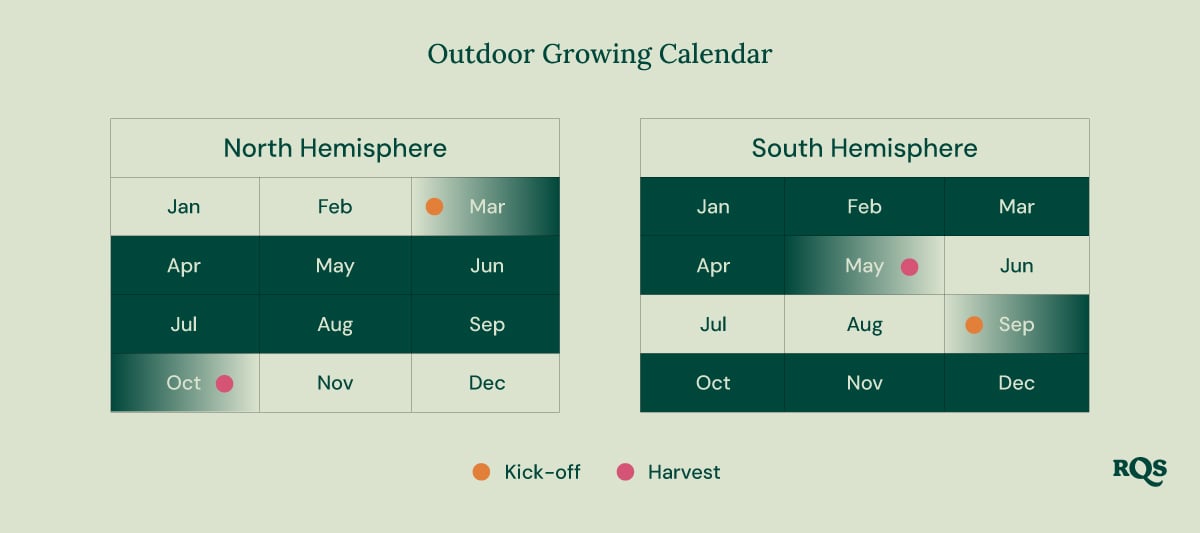
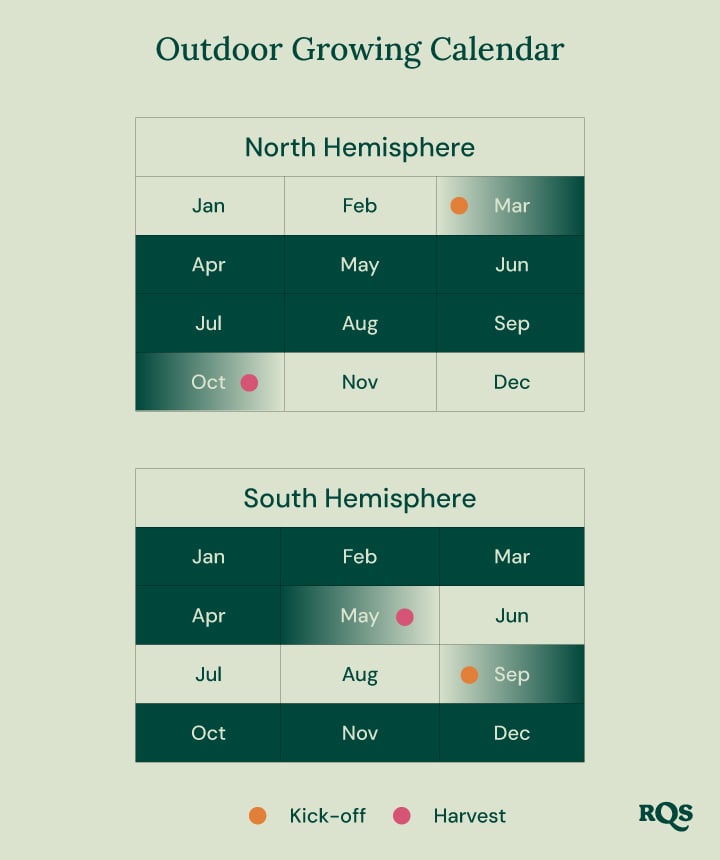
How to Grow Weed Outdoors Along the Equator and in the Tropics
As mentioned earlier, areas along the equator receive a steady 12 hours of sunlight throughout the year. If you’re lucky enough to live in an area sitting on the equator, you might be able to grow cannabis outdoors all year round (weather permitting, of course). In these areas, photoperiod strains might behave similarly to autoflowers, flowering automatically once they reach maturity.
The Tropics of Capricorn and Cancer, on the other hand, receive up to 10.5 and 13.5 hours of sunlight per day following the summer and winter solstices (respectively). In these areas, you might also be able to grow cannabis all year round, depending on the weather, and might find your photoperiod strains to flower based on age rather than a change in light cycle.
Understanding Tropical Cannabis Strains
While cannabis may have its roots in Asia, the plant has managed to spread and adapt (thanks to the help of humans) to almost every corner of the globe.
Varieties that have adapted to the unique climate and light cycle of the tropics and equator typically germinate much earlier than those adapted to grow further north or south.
They may also stay in veg much longer, and even continue developing foliage as they flower, leading them to produce elongated and airy buds.
Just remember that, although equatorial photoperiod strains might behave similarly to autoflowers, they aren’t true autos. Autoflowering strains contain specific genes from Cannabis ruderalis that cause them to flower based on hormonal changes triggered by age. Photoperiod equatorial strains don’t have this gene, and thus their flowering might still be triggered by light changes (as minimal as they might be along the equator or in the tropics).
 Grow Guide Topic Finder
Grow Guide Topic Finder
- Growing cannabis step by step
- Cannabis growing basics
- Choosing your seeds
- How to germinate seeds
- The cannabis vegetative stage
- The cannabis flowering stage
- Harvesting cannabis
- Trimming, drying, and curing
- Choosing pots and soil
-
Growing indoors
- A Complete Overview Of Growing Cannabis Indoors
- Cannabis Cultivation Tips: How To Set Up Indoor Grow Lights
- How Many Cannabis Plants Can You Grow Per Square Metre?
- Indoor Cannabis Growing: Relative Humidity and Temperatures
- Hydroponics Cannabis Growing Guide (with diagrams)
- Cannabis Micro Growing: Growing Great Weed in Tiny Spaces
- Growing outdoors
- How to grow autoflowering cannabis
- Cannabis nutrients and pH
- Cannabis troubleshooting: Nutrients
-
Cannabis troubleshooting: Growing
- Cannabis Seed Germination — Troubleshooting Guide
- How to Deal With Pythium (Root Rot) in Cannabis Plants
- Slow Cannabis Plant Growth And What You Can Do About It
- How to Deal With Leggy Cannabis Seedlings
- Watering Your Cannabis: How to Fix Overwatering and Underwatering
- Understanding Male, Female, And Hermaphrodite Cannabis
- Identifying and Treating Common Cannabis Ailments
- How To Revive a Sick Cannabis Plant
- How to Avoid Mouldy Weed During Drying and Curing
- How to Prevent and Treat Dry and Crispy Cannabis Leaves
- What Cannabis Leaves Can Tell You
- Causes and Solutions for Yellow Cannabis Leaves
-
Cannabis Strains Grow Report
- HulkBerry Automatic Grow Report
- Blue Cheese Auto Grow Report
- Purple Punch Automatic Strain Grow Report
- Triple G Automatic Grow Report
- Do-Si-Dos Automatic Grow Report
- Green Gelato Automatic Grow Report
- Haze Berry Automatic Grow Report
- Purple Queen Automatic Grow Report
- Cookies Gelato Automatic Grow Report
- Sherbet Queen Automatic Grow Report
- Sweet Skunk Automatic Grow Report
- Medusa F1 Grow Report
- Cannabis plant training
-
Weed growing tips
- The Cannabis Plant Anatomy
- How to preserve seeds
- How Much Sunlight Do Outdoor Cannabis Plants Need To Grow?
- How to Control and Prevent Stretching in Cannabis Plants
- My Cannabis Plants Are Growing Too Tall: What Should I Do?
- Should You Worry About Purple Or Red Cannabis Stems?
- What To Do When Your Indoor Cannabis Won’t Flower
- How To Protect Your Cannabis Plants From Heat Stress
- How To Tell If Your Female Cannabis Plant Has Been Pollinated
- Growing Medical Marijuana
- Bud Washing: How to Clean Your Weed
- Understanding Cannabis Yield per Plant


























